
Ravelry link
I am very excited to share another pattern with you, this time a shawl I have named “Uva” which means “grape” in Spanish. I just can’t help thinking of grapes when I look at it! This shawl uses just two stitches, dc and dtr, and it is so easy to make. I used Ginger’s Hand Dyed Splendor in Wine O’Clock (read about this yarn here) and I just love the final result.

I mentioned I would recommend other yarns for this pattern that are a bit more budget friendly (but if you can buy this yarn I definitely recommend it), you could really use any other 4ply yarn, and even a DK one would still be OK, but here are some recommendations for my UK readers:
Yeoman Yarns Sport 4 ply – This yarn is 100% merino wool sold in 400gr cones for a bit less than 20 pounds, I have used it in shawls and it is lovely, great stitch definition. You will have plenty leftover to make other things with it as well.
Wendy Merino 4ply: This is a very nice yarn and it is sold in 50gr balls so that you can just get what you need for this project.
King Cole Merino Blend 4 ply: I used this yarn for my fingerless mitts and I think it is quite good for the price. You can buy it in balls or cones and some stores like Ginger Twist Studio sell them by weight (multiples of 50g) so that you can get just what you need.
Hope that helps 😉 And here is the pattern!

Uva Shawl Pattern
This pattern has an increase section and a decrease section. Basically you are working the shawl sideways: you start on one end of the shawl with very few stitches and increase every two rows until you get to the middle section, then start decreasing until you have very few stitches again and get to the other end of the shawl.
The shawl measures 140cm long and it is 36cm at the widest part. Gauge is not very important, because of the way the shawl is constructed you can simply work up until you have a bit over half the yarn leftover and then start decreasing. If you prefer to work according to gauge you can work the pattern (one row of the stitch pattern repeat explained below followed by one row of dc). With a 3.5mm hook and 4ply yarn you should get 20 st and 22 rows in 10cmx10cm.
Materials
2 x 100g skeins Ginger’s Hand Dyed Splendor 4ply in Wine O’Clock (used 160gr/640m). See above for other yarn options.
3.5mm hook
Needle to weave in ends
Abbreviations
ch – chain
dc – UK double crochet
dtr – UK double treble
Stitch Guide
UK double treble: yarn over hook twice, insert hook in stitch, yarn over and pull up a loop, (yarn over pull through 2 loops on hook) 3 times.
dc2tog: insert hook in stitch, yarn over and pull up a loop, insert hook in next stitch, yarn over and pull up a loop, yarn over and pull through 3 loops on hook.

Tip for an easier way to follow the pattern:
 This pattern is very simple an easy to follow without thinking about it much or counting the stitches in each row. The instructions are below and you can just follow each line all the way through the many rows but I thought I would share an easy way to do this pattern that you would find out eventually but why not save you some time!
This pattern is very simple an easy to follow without thinking about it much or counting the stitches in each row. The instructions are below and you can just follow each line all the way through the many rows but I thought I would share an easy way to do this pattern that you would find out eventually but why not save you some time!
Ok so, this pattern starts with an increase section and finishes with a decrease section. I will explain it for the increase one since it comes first and after understanding that one the decrease will come easy to you. When you are in the increase section yo do a row of the stitch pattern (let’s call that to the rows that have the little bobbles), followed by a row of dc in every stitch all the way until the last st where you do two dc, therefore you increase 1dc every two rows.
Now, the rows with the stitch pattern (with the bobbles) are very easy to do without thinking about them because there are no increases or decreases, and no matter in what part of the shawl you are a stitch pattern row will be a repeat of 6 stitches with just a couple of things to bear in mind.
Let’s see the 6 stitches: dtr, dc, dtr, dc, dc, dc (or dtr, dc, dtr, 3dc). Now imagine you are in ANY row where you do the stitch pattern repeat: You always ch 1 and dc in first st. Now start your 6-stitch-repeat (dtr, dc, dtr, 3dc) all the way until you get to the last st. No matter in what part of the 6-stitch-repeat you ended up, dc in the last dc and turn for the next row (which in the increase section will be an increase row and in the decrease section will be a decrease row). So that is all: dc in first st, dc in last st, and fill the space in between with as many repeats of the 6-stitch-repeat as you can fit, no matter if the last repeat is not a full one.
So let’s put it in practice so that you see how easy it is. Let’s say you are in Row 18 so you have just finished an increase row that left you with 11 sts to work.
So ch 1, dc in first st, start with the 6-stitch-repeat and stop when you have one stitch left: you do the repeat once, then start the second one: dtr, dc, dtr…. and then you have only one st left, so you stop the repeat and do a dc.
This is for EVERY stitch pattern row, even for the decrease section. In this section the only difference is that you do a decrease row instead of an increase row, meaning that you dc all the way through until the last two stitches, where you do a dc2tog.
I would advise you start following the pattern until Row 11 and then try this tip to continue working your shawl.
Notes
- Beginning chain does not count as a st.
- Turn your work after each row.
- It doesn’t really matter if you chain 1 and then turn, or turn and chain 1. See what you like best and go with that.
- Stitch number at end of row instruction corresponds to number of sts in that row. If this doesn’t appear in the row it means it has the same number of sts as the last one.

Instructions
Increase section
Ch4.
Row 1: dc in second ch from hook, 2dc. Turn (3 st).
Row 2: ch 1, 3dc. Turn.
Row 3: ch 1, 2dc, 2dc in last dc. Turn (4st).
Row 4: ch 1, dc in first dc, dtr, 2dc. Turn.
Row 5: ch 1, 3dc, 2dc in last dc. Turn (5st).
Row 6: ch 1, dc in first dc, (dtr, dc) two times, dc. Turn.
Row 7: ch 1, 4dc, 2dc in last dc. Turn (6st).
Row 8: ch 1, dc in first dc, (dtr, dc) two times, dc. Turn.
Row 9: ch 1, 5dc, 2dc in last dc. Turn (7st).
Row 10: ch 1, dc in first dc, (dtr, dc) two times, 2dc. Turn.
Row 11: ch 1, 6dc, 2dc in last dc. Turn (8st).
Row 12: ch 1, dc in first dc, (dtr, dc) two times, 3dc. Turn.
Row 13: ch 1, 7dc, 2dc in last dc. Turn (9st).
Row 14: ch 1, dc in first dc, (dtr, dc) two times, 2dc, dtr, dc. Turn.
Row 15: ch 1, 8dc, 2dc in last dc. Turn (10st).
Row 16: ch 1, dc in first dc, (dtr, dc) two times, 2dc, dtr, 2dc. Turn.
Row 17: ch 1, 9dc, 2dc in last dc. Turn (11st).
Row 18: ch 1, dc in first dc, (dtr, dc) two times, 2dc, (dtr, dc) two times. Turn.
Row 19: ch 1, 10dc, 2dc in last dc. Turn (12st).
Row 20: ch 1, dc in first dc, (dtr, dc) two times, 2dc, (dtr, dc) two times, dc. Turn.
Row 21: ch 1, 11dc, 2dc in last dc. Turn (13st).
Row 22: ch 1, dc in first dc, (dtr, dc) two times, 2dc, (dtr, dc) two times, 2dc. Turn.
Row 23: ch 1, 12dc, 2dc in last dc. Turn (14st).
Row 24: ch 1, dc in first dc; *dtr, dc, dtr, 3dc, rep from * until last st, dc in last dc. Turn.
Row 25: ch 1, dc in each st across until last st, 2dc in last dc. Turn (15st)
Row 26: ch 1, dc in first dc; *dtr, dc, dtr, 3dc, rep from * until last 2 st, dtr, dc in last dc. Turn.
Row 27: ch 1, dc in each st across until last st, 2dc in last dc. Turn (16st)
Row 28: ch 1, dc in first dc; *dtr, dc, dtr, 3dc, rep from * until last 3 st, dtr, 2dc. Turn.
Row 29: ch 1, dc in each st across until last st, 2dc in last dc. Turn (17st)
Row 30: ch 1, dc in first dc; *dtr, dc, dtr, 3dc, rep from * until last 4 st, (dtr, dc) two times. Turn.
Row 31: ch 1, dc in each st across until last st, 2dc in last dc. Turn (18st)
Row 32: ch 1, dc in first dc; *dtr, dc, dtr, 3dc, rep from * until last 5 st, (dtr, dc) two times, dc in last dc. Turn.
Row 33: ch 1, dc in each st across until last st, 2dc in last dc. Turn (19st)
Row 34: ch 1, dc in first dc; *dtr, dc, dtr, 3dc, rep from * across. Turn.
Row 35: ch 1, dc in each st across until last st, 2dc in last dc. Turn (20st)
Repeat Rows 24 to 35 (twelve rows) nine times. You will have 143 rows in total and 74 sts in Row 143.
Row 144: ch 1, dc in first dc; *dtr, dc, dtr, 3dc, rep from * until last st, dc in last dc. Turn.
Row 145: ch 1, dc in each st across until last st, 2dc in last dc. Turn (75st)
Row 146: ch 1, dc in first dc; *dtr, dc, dtr, 3dc, rep from * until last 2 st, dtr, dc in last dc. Turn.
Row 147: ch 1, dc in each st across until last st, 2dc in last dc. Turn (76st)
Row 148: ch 1, dc in first dc; *dtr, dc, dtr, 3dc, rep from * until last 3 st, dtr, 2dc. Turn.
Row 149: ch 1, dc in each st across. Turn (76st)
Decrease Section
Row 1: ch 1, dc in first dc; *dtr, dc, dtr, 3dc, rep from * until last 3 st, dtr, 2dc. Turn.
Row 2: ch 1, dc in each st across until last st, dc2tog in last two st. Turn (75st).
Row 3: ch 1, dc in first dc; *dtr, dc, dtr, 3dc, rep from * until last 2 st, dtr, dc in last dc. Turn.
Row 4: ch 1, dc in each st across until last st, dc2tog in last two st. Turn (74st).
Row 5: ch 1, dc in first dc; *dtr, dc, dtr, 3dc, rep from * until last st, dc in last dc.
Row 6: ch 1, dc in each st across until last st, dc2tog in last two st. Turn (73st).
Row 7: ch 1, dc in first dc; *dtr, dc, dtr, 3dc, rep from * across. Turn.
Row 8: ch 1, dc in each st across until last st, dc2tog in last two st. Turn (72st).
Row 9: ch 1, dc in first dc; *dtr, dc, dtr, 3dc, rep from * until last 5 st, (dtr, dc) two times, dc in last dc. Turn.
Row 10: ch 1, dc in each st across until last st, dc2tog in last two st. Turn (71st).
Row 11: ch 1, dc in first dc; *dtr, dc, dtr, 3dc, rep from * until last 4 st, (dtr, dc) two times. Turn.
Row 12: ch 1, dc in each st across until last st, dc2tog in last two st. Turn (70st).
Repeat Rows 1 to 12 nine times, you will have 120 rows in total and will finish Row 120 with 16 st.
Row 121: ch 1, dc in first dc; *dtr, dc, dtr, 3dc, rep from * until last 3 st, dtr, 2dc. Turn.
Row 122: ch 1, dc in each st across until last st, dc2tog in last two st. Turn (15st).
Row 123: ch 1, dc in first dc; *dtr, dc, dtr, 3dc, rep from * until last 2 st, dtr, dc in last dc. Turn.
Row 124: ch 1, dc in each st across until last st, dc2tog in last two st. Turn (14st).
Row 125: ch 1, dc in first dc; *dtr, dc, dtr, 3dc, rep from * until last st, dc in last dc. Turn.
Row 126: ch 1, dc in each st across until last st, dc2tog in last two st. Turn (13st).
Row 127: ch 1, dc in first dc, (dtr, dc) two times, 2dc, (dtr, dc) two times, 2dc. Turn.
Row 128: ch 1, dc in each st across until last st, dc2tog in last two st. Turn (12st).
Row 129: ch 1, dc in first dc, (dtr, dc) two times, 2dc, (dtr, dc) two times, dc. Turn.
Row 130: ch 1, dc in each st across until last st, dc2tog in last two st. Turn (11st).
Row 131: ch 1, dc in first dc, (dtr, dc) two times, 2dc, (dtr, dc) two times. Turn.
Row 132: ch 1, dc in each st across until last st, dc2tog in last two st. Turn (10st).
Row 133: ch 1, dc in first dc, (dtr, dc) two times, 2dc, dtr, 2dc. Turn.
Row 134: ch 1, dc in each st across until last st, dc2tog in last two st. Turn (9st).
Row 135: ch 1, dc in first dc, (dtr, dc) two times, 2dc, dtr, dc. Turn.
Row 136: ch 1, dc in each st across until last st, dc2tog in last two st. Turn (8st).
Row 137: ch 1, dc in first dc, (dtr, dc) two times, 3dc. Turn.
Row 138: ch 1, dc in each st across until last st, dc2tog in last two st. Turn (7st).
Row 139: ch 1, dc in first dc, (dtr, dc) two times, 2dc. Turn.
Row 140: ch 1, dc in each st across until last st, dc2tog in last two st. Turn (6st).
Row 141: ch 1, dc in first dc, (dtr, dc) two times, dc. Turn.
Row 142: ch 1, dc in each st across until last st, dc2tog in last two st. Turn (5st).
Row 143: ch 1, dc in first dc, (dtr, dc) two times, dc. Turn.
Row 144: ch 1, dc in each st across until last st, dc2tog in last two st. Turn (4st).
Row 145: ch 1, dc in first dc, dtr, 2dc. Turn.
Row 146: ch 1, dc in each st across until last st, dc2tog in last two st. Turn (3st).
Row 147: ch 1, 3dc. Turn.
Row 148: ch 1, dc in first dc, dc2tog in last two st. (2st).
Don’t cut yarn.
Edging
With right side of shawl facing you, turn to work on bottom edge of the shawl.
Row 1: ch 1, 1dc per row until middle of the shawl (Row 149), 3dc, 1dc per row until the end. Turn (301 sts). Don’t worry too much about where you do the dc and it is fine if you miss a row at some point, try to get the amount of stitches required to get the edge to match up better, though it is not the end of the world if it doesn’t 😉
Row 2: ch 1, *(dc, ch3, dc) in next st, skip 1dc, 3dc, repeat from * until last st, (dc, ch 3, dc) in last st.
Fasten off.
Block lightly (steam block or pin it to the size you want, spray it with some water and let it dry).
As usual, please let me know if you have any questions, hope you like it!
x
Sol
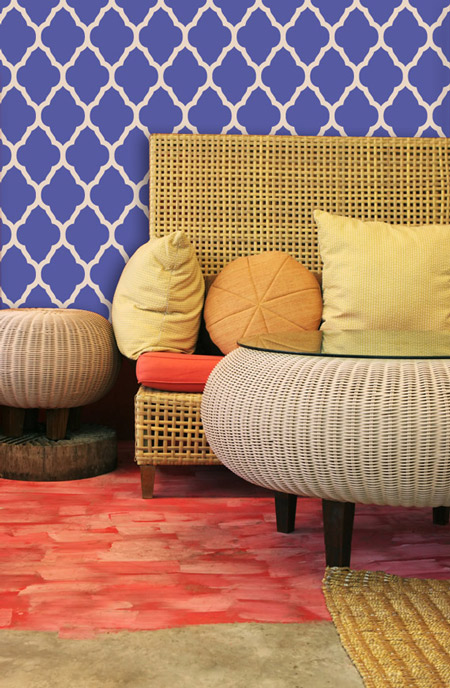
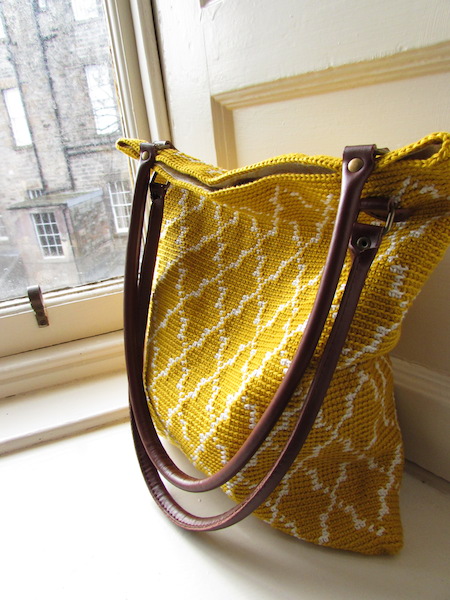

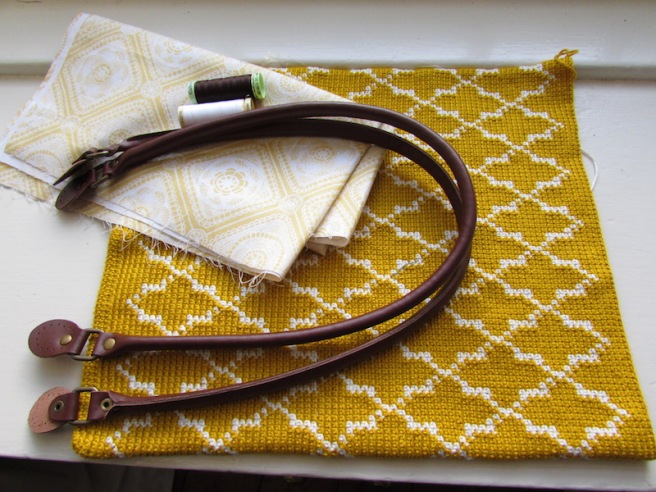
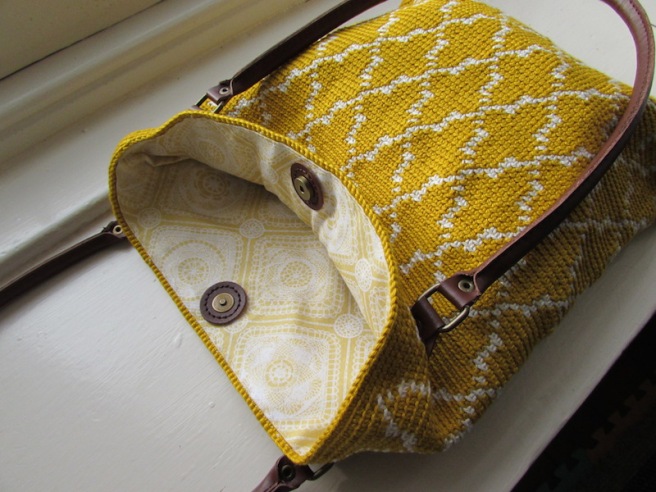


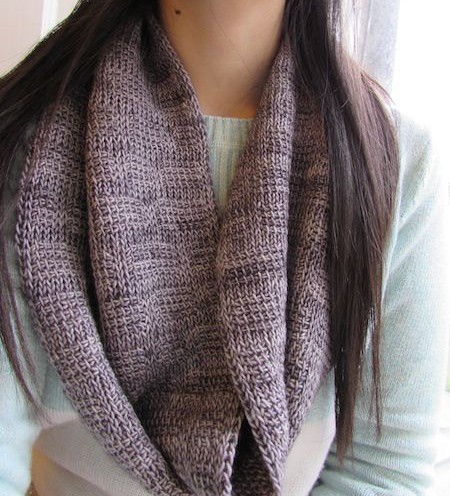




























































































 This pattern is very simple an easy to follow without thinking about it much or counting the stitches in each row. The instructions are below and you can just follow each line all the way through the many rows but I thought I would share an easy way to do this pattern that you would find out eventually but why not save you some time!
This pattern is very simple an easy to follow without thinking about it much or counting the stitches in each row. The instructions are below and you can just follow each line all the way through the many rows but I thought I would share an easy way to do this pattern that you would find out eventually but why not save you some time!

















































































































